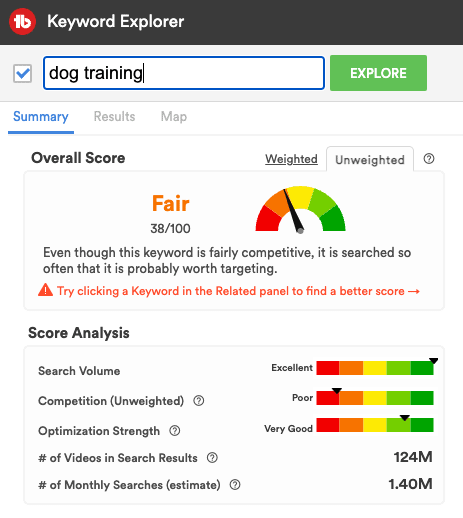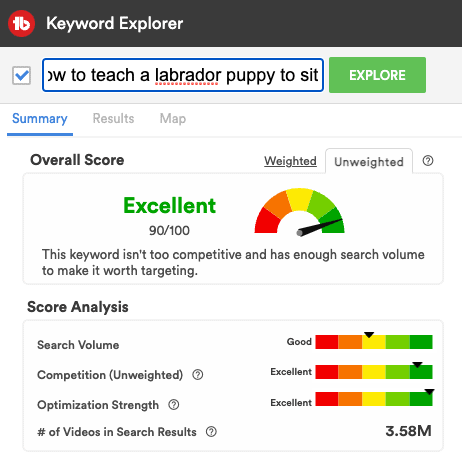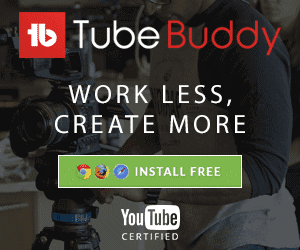YouTube sub4sub is the worst thing that you can do if you’re trying to grow your youtube channel.
In this article, we’re gonna look at why sub4sub is bad for channel growth on YouTube and what you should do instead.
Let’s get into it.
What is Sub4Sub on YouTube?
Sub4sub is when you subscribe to someone on YouTube with the only purpose of your subscription being for them to subscribe back.
The idea behind this kind of reciprocation is that it’s mutually beneficial to grow your channel.
But this isn’t how YouTube works, and it hasn’t worked like this for a long time.
This type of behavior happens most often in YouTube comments on videos that talk about channel growth for small channels, on dedicated live streams for sub4sub exchanges, in Facebook Groups, discord servers, Telegram groups, subreddits, etc.
At the end of the day, if you participate in sub4sub activities on YouTube, you’re just wasting your own time.
The time that could be spent creating more videos, or learning the things that actually will help you grow on YouTube.
Why Sub4Sub on YouTube is Bad For Channel Growth
YouTube sub4sub is bad for a number of reasons, but the two most important ones are:
Your YouTube Channel can get terminated
Participating in YouTube sub4sub goes against YouTube’s fake engagement policy. If you are caught participating in Sub4Sub activities, your channel can get terminated and deleted without any warning.
The fake engagement policy clearly states:
“Don’t post content on YouTube if it fits any of the descriptions noted below… – Offering to subscribe to another creator’s channel only if they subscribe to your channel (“sub4sub”)”
It’s not very difficult for YouTube to see if you participate in these Sub4Sub groups, even if you partake in them on other platforms like Facebook, Reddit, or Discord.
YouTube’s algorithm recognizes patterns and uses these patterns to help show your content to people that will be more likely to enjoy your content.
That’s the good part about how YouTube works, but if you participate in Sub4Sub activities, it can also be the part that gets your channel deleted.
Your channel will become associated with all of the other spammy channels doing this activity, and once the bots come around to crawl your channel, it can very easily be flagged and then terminated.
You will ruin your channel engagement
If the threat of channel termination isn’t enough to turn you away from doing Sub4Sub on YouTube, then this definitely should.
Sub4Sub won’t grow your channel, it will actually cause your channel to stop growing actually.
Your subscriber count may go up, but as your subscriber count goes up, your engagement will go down. And engagement is the actual metric you want to focus on to grow your YouTube channel (AUTHENTIC engagement!).
What happens is this, when you upload a new video, YouTube promotes it to a small group of your viewers (subscribers and also non-subscribers).
If this initial promotion gets good engagement (high clickthrough rate and audience retention) it is then promoted to a wider similar audience, continuously testing until the engagement flatlines.
If you have a very engaging video, it can then take off and get many thousands of views.
When you participate in Sub4Sub activities though, the people that YouTube will promote your video to are these people that have shown some engagement with your channel by subscribing. But they will not watch your video because they have no incentive to.
This means that after you upload your video, you will get little to no views. YouTube will understand this to mean that the video is bad and won’t promote it further. Effectively killing your channel engagement and making it very difficult to build a channel even if you move away from that spammy practice in the future.
So doing Sub4Sub on YouTube is actually WORSE than uploading a video to a channel with 0 subscribers.
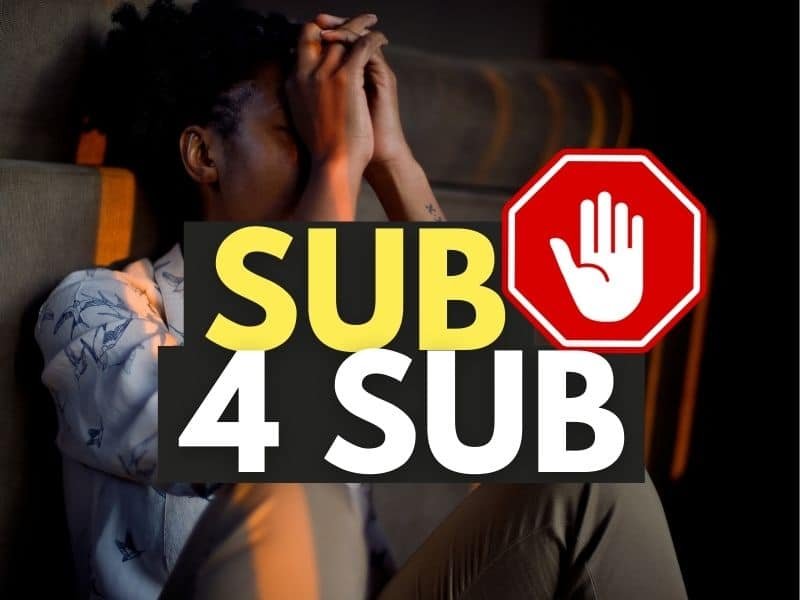
What you should do instead of Sub4Sub on YouTube
So, I’m not someone that is going to point out problems without thinking of some solutions. If you are looking to grow your YouTube channel, this is what I recommend that you do instead of Sub4Sub.
Of course, you should follow the basic tactics like having good thumbnails, having a well-designed youtube homepage that clearly shows what you’re about, focusing on a specific niche, optimizing your video titles and descriptions, etc etc.
But I want to focus on a video strategy that will actually grow your channel.
I want you to focus on creating two types of content.
1. Answer questions people are actually asking
This type of content is search-based content.
What you should try and do is target very specific questions within your niche that people are actually asking.
Broad questions will be monopolized by the larger channels because a lot of people are looking and asking these questions, so they’ll be incentivized to make videos on those topics.
What you can do instead is go very deep in your niche or be very specific with your questions because these will be too small for larger channels as it won’t be worth their while.
As a new YouTuber, however, you can get in the door by targeting keywords that might only have a couple of hundred searches per month, because they have such a small amount of traffic it means that these larger channels are not going to be targeting them and you have a very good chance of ranking for these keywords.
An example of this could be “dog training”. This is very competitive as you can see below.
As a small channel, you can rather target a specific aspect of dog training, and then go deeper and maybe even include a specific breed or age, for example, “How to teach a Labrador puppy to sit”.
As you can see below, this is much less competitive but still gets a decent number of searches per month to get you a consistent number of views if your video ranks well.
obviously, the more specific video is not going to get as many views as the broader term video if both ranked 1st in search results.
But you won’t be able to rank for that broader term as a small channel, whereas you definitely could rank for something as specific as the second example.
No one else would really be making a video about that topic and there would be more than enough dog owners or labrador owners that have a labrador puppy and they’re trying to teach them to sit.
So you could be providing them value by answering their question.
There might only be a couple of hundred maybe a thousand searches per month for those types of dog owners but they will be there and they will keep on coming because people keep getting dogs, and they want to know how to teach them specific commands like “sit”.
I recommend TubeBuddy to find and validate these keywords, questions, and topics. This is the tool used in the two images above, it’s a free browser extension, and it has a nice little graph to show you how many times a keyword is searched per month, as well as how competitive it is.
You want to target keywords that have low competition and then have at least some traffic when you’re starting out.
You don’t need to go and try to find phrases that get millions and millions of views, but if you can find something that has a lot of searches but no competition then you should definitely go for that but most of the time you’re not really going to find these as the larger channels have monopolized them.
TubeBuddy also has some helpful features to give you ideas on other keywords you could try to target.
Download the free TubeBuddy browser extension here and get started (and check out my overview of the best TubeBuddy features here.
So, going after search-based content is the first type of content I want you to make and is what I consider to be the foundation of your YouTube channel.
2. Create videos that pique the interests of people within your niche
The second type of content that you want to make is what I call suggestion or recommendation-focused content.
As the name suggests this type of content is not really focused on appearing in search results, rather, it’s designed more to catch the eye of the suggested and the recommended areas across YouTube.
So you’re not going to optimize these for search results you’re going to try and optimize these to pique the potential viewer’s interest.
These types of topics could be things like:
- Mistakes that people make in your niche
- Things you don’t know about XYZ in your niche
- The easiest to do XYZ
- The quickest way to do XYZ
These aren’t things that people are specifically searching for but if they see them in a suggested or in a recommended area they will be more enticed because they’ll be wondering “Am I making these mistakes? Is there a quicker way of doing this? Is there a better way of doing what I’m doing?” which can pique their interest to then click-through.
There are many different ways of doing this, but these should get you going in the right direction.
A quick tip to find some of these types of ideas is for you to go to some channels that you’re following or some channels in your niche and visit their video page and then sort by “most popular”.
Most of the time they’ll have a couple of suggestion-based videos at the top, as some of the most popular videos.
This is especially true for channels that grow rapidly, like Peter McKinnon’s.
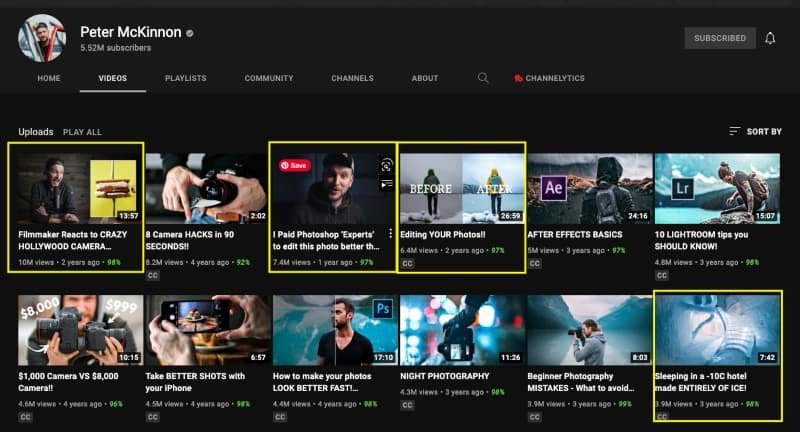
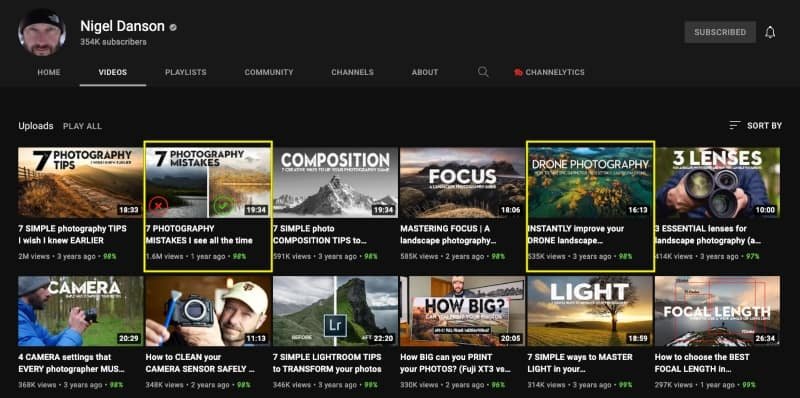
If the channel growth on a channel is slow, they may not have many of these videos and if they tried making them, they may not have understood their audience and niche well enough for the videos to reach the wider spectrum across their entire niche and for the effects of exponential growth to really take hold.
The exponential growth of suggestion-based content means videos can get recommended to more people interested in a specific topic.
Videos get pushed to a specific niche of people where there might be millions of people interested in a specific subject.
In contrast, maybe only 1,000 people are trying to solve a specific problem like teaching a labrador puppy how to sit.
The YouTube Strategy You Should Use Instead of Sub4Sub
Those are the two different types of content that you should be made to grow your channel, and this is how you should use them.
I recommend making a 70:30 split on the two different types of content.
So 70% of your videos would be for search intent and 30% of your videos should be for suggestion-based content.
Why you should focus more on the search is because you don’t have much of a following yet so once you’ve got more of a following the suggestion-based content has a higher chance of bigger rewards and being picked up by YouTube’s algorithm.
You can also control what type of viewers you want to attract with search, which YouTube can then utilize to find people with similar interests and who are interested in your content later on with suggestions and recommendations.
When you don’t have that following, your suggestion-based videos can fall on deaf ears, so you want to use the search traffic to get people to your channel, which is why I refer to it as your channel’s foundation.
Search traffic on a specific video will naturally flatline at a certain point if you rank in the top 2 or 3.
Once you reach 1st position for teaching a labrador puppy to sit, it may get a thousand views per month, but that would be a fairly consistent thousand views if your video maintains its ranking.
Whereas if your video gets suggested by youtube it can exponentially grow the amount of views hour after hour and day by day.
If we stick with the labrador example, a video on “7 Mistakes All Labrador Owners Make” will have a much larger pool of potential viewers than the video teaching a puppy to sit.
But because you’ve already made content attracting labrador owners, they will be very inclined to see what these mistakes are and YouTube is smart enough to see that Labrador owners of all kinds are watching and engaging with this video and it will promote it to more Labrador owners (yes, if you have a labrador, YouTube, Google, Facebook, etc. all know about it).
But as you can see, you can’t really do that without building that foundation.
That’s why you need to focus around 70% on search content and only 30% on suggestion/recommended content.
In order to try and speed up that channel growth, you still want to put your fishing rod in the water.
You don’t want to just be targeting search traffic for months and months until you get x amount of subscribers or views though.
You still want to keep that fishing rod out there because there’s a chance that something may bite and it could be something big!
Final thoughts on Sub4Sub on YouTube and channel growth
As you can see, Sub4Sub is the worst thing you can do if you want to grow a channel.
Not only can your channel be deleted, but it will ruin your channel engagement leaving you in a worse position than when you started with 0 subscribers.
To grow on YouTube as a small channel, the two things that you should do instead of wasting your time on Sub4Sub are to focus on answering questions that people are actually asking and create videos that peak the interests of people within your niche.

